Chloe Cull – 16 May, 2015
While any inherent sense of femininity isn't necessarily visible within Expeditionary Force, the young women that make up Amazons are happy to be considered part of a New Zealand women's art movement. This group show harks back to the beginnings of the women's art movement in Christchurch in the seventies with Women's Art: an exhibition of six contemporary women artists at the McDougall Art Gallery in 1975. It may seem unfashionable, but the Amazon Painters are tackling an art world that hasn't seen women artist collectives in a couple of decades.
Wellington
Rosa Alison, Janie Bruce, Olivia Chamberlain, Rebecca Hasselman, Georgia Watts, Lauren Taylor, Tyne Gordon
Amazons: Expeditionary Force
Curated by Roger Boyce
30 April - 16 May 2016
Wellington’s Suite gallery is hard to miss in its new street-level space on upper Cuba Street. A bright pink sign and massive street facing windows have transformed the previously hard-to-find space into somewhat of a fishbowl.
This could only be considered a positive thing for the latest show of seven recent Ilam graduates, Amazons: An Expeditionary Force. The seven artists in the show - all female, all painters - earned the title Amazons after they formed a close friendship and working relationship during their art school years. They first exhibited together as the Amazon Painters in 2014 at Chambers 241 in Christchurch. Seeing their potential as a women’s collective or collaborative group, Roger Boyce curated An Expeditionary Force, their first show out of Christchurch, showing for just over two weeks at Suite. According to Boyce in the publication accompanying the exhibition, ‘Legitimate bragging rights encourage me to publicly celebrate these female students, a good many who’ve earned ongoing exhibition prospects and some bona-fide waiting lists.’(1)
On my arrival at Suite in the last week of the show, I was greeted by a completely different exhibition: a couple of large Fiona Pardington works and some paintings by Arie Hellendoorn and Emily Hartley-Skudder. I glimpsed, behind the gallerist’s desk and a partition wall, a handful of the works I recognised from the Amazons‘ catalogue. The reason the show was no longer up, I was told, was that the new works needed to photographed for a catalogue and it seemed unnecessary to rehang Expeditionary Force so close to its end date (four days from when I visited). I wonder how the exhibiting artists would have felt about that reasoning. Nevertheless, on request I was shown the rest of the work from out the back and the lucky few that still remained on the back walls of the gallery.
The de-installation of the show aside, I did my best to get an impression of the exhibition based on the work I saw and some installation photographs. Certainly, it did look good photographed, particularly the left wall of works by Janie Bruce, Tyne Gordon and Olivia Chamberlain. All three women worked with a similar colour palette of blue and grey, the result a series of works that looked particularly fresh and sympathetic to one another.
Painting, in the traditional sense, has rapidly been going out of fashion in New Zealand over the last two decades. According to Peter Dornauf in his latest EyeContact review ‘The Painter Alone‘ this is especially so in regard to the rendering of the human figure and expressionist painting styles. In this latest show, the Amazon Painters do away with any reliance on fashion. Each of the artists responds to a different history of representation, using paint on canvas as their medium.
Landscapes form a sort of theme among the work in Expeditionary Force. Rebecca Hasselman engages with modern abstraction with works that flatten and reduce the landscape to a series of colours and shapes. Returning to the aesthetic of Helen Frankenthaler and Nicolas De Stael, for example, Hasselman’s works make us question how we see.
Tyne Gordon’s smaller canvases, influenced by the limitations of photography, take us close to the surface of an iceberg, where a thick application of oil paint makes two texturally interesting works, Iceberg II and Frozen Geyser III. Her third work, Cloud, is pleasing, but is dwarfed next to Janie Bruce’s work of the same style, Glazing at a Red-Leafed Maple across a Ravine. Here, Bruce celebrates a similar subtlety to Gordon’s works, but on a larger scale. Bruce combines the painterly with the abstract in the largest work of the exhibition in which a loose and expressive application of paint articulates a cloud like mass of blue, grey and black.
Like Hasselman, Rosa Allison works to flatten forms and shapes in her collage work, Puddles and Squares. According to her artist statement, Allison is interested in creating tension between shapes and colours, between the curving ‘puddle’ forms and visible brushstrokes against the hard outlines of the canvas, for example.
Allison’s work looks good photographed and stands out as being different from the more painterly styles of the rest. However, a theme among several of the works in the exhibition, which is unfortunately exemplified on close inspection of Allison’s work, is a lack of finish and polish. This may have been a stylistic choice in some cases, but in others it came across as a little sloppy. The Amazon Painters are recent graduates (some are still at Ilam) and I imagine are somewhat new to exhibiting. This is not intended to sound patronising, but maybe some of the finer details of making works exhibition-ready are yet to be learned. Perhaps Suite’s decision to take down the exhibition early is an indication of the general feeling for the exhibition. If so, this is something the Amazon Painters could think about in the future.
However, details aside, the works generally looked good within the space. Chamberlain’s paintings were among the most polished in the exhibition, along with one of Hasselman’s works exhibited in an attractive wooden frame, and Georgia Watts’ filmic works which were set behind glass. Chamberlain’s paintings are certainly wall-ready and have, I expect, the most saleability. In my opinion, Bruce’s work was perhaps the most refined in terms of artistic merit while interestingly, one of the smallest works in the show came across as being the most professional. Georgia Watts’ Subterranean Tondo is a small circular work (20cm in diameter) that contrasts the use of line drawing with colour and abstraction. The catalogue doesn’t do the work justice, but hung in Suite Watts’ work looked quality beyond the limited space provided by Suite on my visit (granted, it had pride of place in the original hang).
In the accompanying publication, Boyce returns to a time in his own history: New York City in the 1990s as a member of the Women’s Action Coalition and Guerrilla Girls protest at the Pace Gallery. The jump across countries seems unnecessarily ambitious given the history of women’s art and activism in New Zealand in the 70s and 80s; Spiral magazine; Broadsheet; the Wellington Women’s Gallery; Haeata Māori Women’s Art Collective; and the 1990 boycott by Māori women artists of the National Art Gallery’s Kohia ko Taikaka Anake. There is no real need to look further than New Zealand, where the Amazons are becoming a part of a rich history of women’s painting in that includes the likes of Gretchen Albrecht, Rita Angus, and Francis Hodgkins.
While any inherent sense of femininity isn’t necessarily visible within Expeditionary Force, the young women that make up Amazons are happy to be considered part of a New Zealand women’s art movement. This group show harks back to the beginnings of the women’s art movement in Christchurch in the seventies with Women’s Art: an exhibition of six contemporary women artists at the McDougall Art Gallery in 1975. It may seem unfashionable, but the Amazon Painters are tackling an art world that hasn’t seen women artist collectives in a couple of decades. Maybe it’s because we are not meant to need them anymore. But given that women are still under represented in most major public galleries in New Zealand, there must still be room for women artists to work under the title of ‘women’s art’ for the purpose of challenging contemporary art institutions. In the words of Boyce, ‘I can’t see ‘my’ painters (female or male) standing for this sort of elitist horseshit much longer.’(2) I’m sure they won’t.
Chloe Cull
(1) Roger Boyce, Amazons: Expeditionary Force, publication accompanying the 2015 exhibition at Suite Gallery
(2) Boyce, 2015
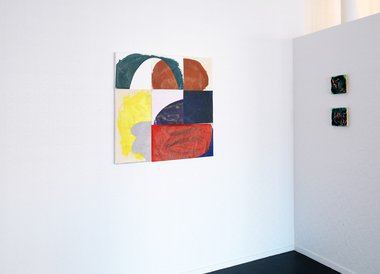
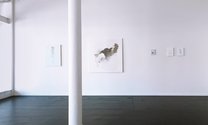

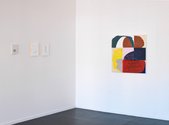
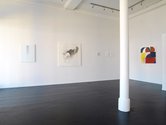
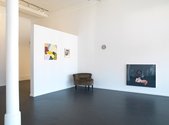
 Two Rooms presents a program of residencies and projects
Two Rooms presents a program of residencies and projects Advertising in this column
Advertising in this column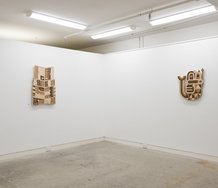
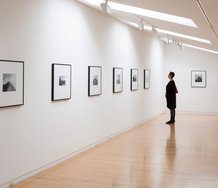
This Discussion has 0 comments.
Comment
Participate
Register to Participate.
Sign in
Sign in to an existing account.